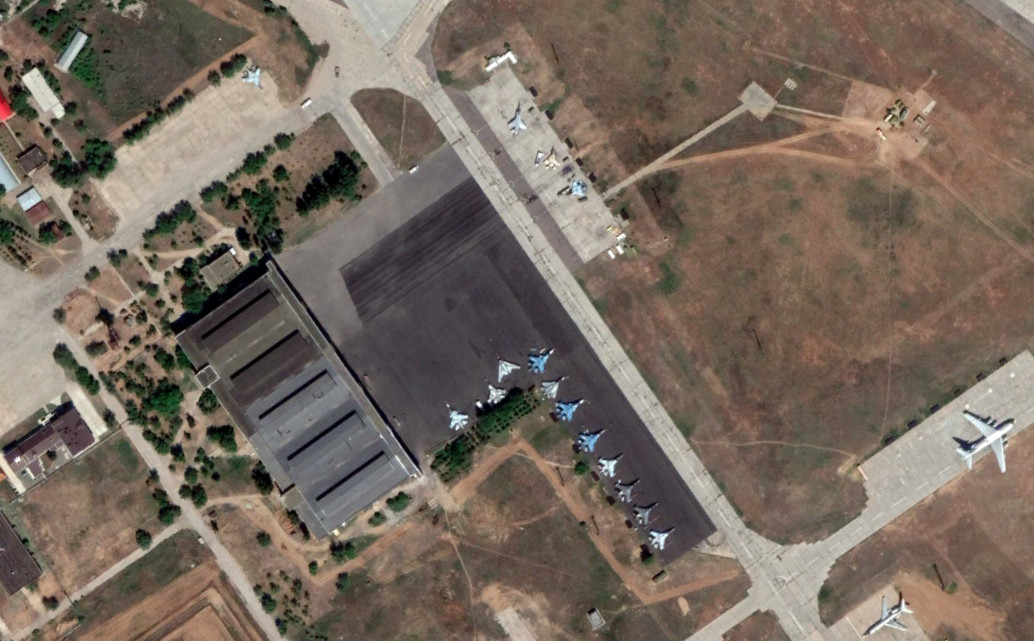Russia’s S-70 Okhotnik-B, or Hunter-B, flying wing unmanned combat air vehicle, or UCAV, has flown together with a Su-57 advanced combat jet for the first time. The Russians see at least one of the S-70’s future missions being to operate together with the Su-57 in a “loyal wingman” role, which could help mitigate some of the shortcomings of the latter manned aircraft’s design and usher in new air combat synergies overall.
The Russian Defense Ministry announced the test flight on Sept. 27, 2019, but did not say specifically where or when it had taken place. Video footage that the Kremlin released from the flight strongly suggests it occurred at the 929th Chkalov State Flight-Test Center in Russia’s southwestern Astrakhan region, which is also likely where the S-70’s first flight took place earlier this year. The flight reportedly lasted “more than 30 minutes,” according to an official statement.
“As part of the ongoing test program, the Okhotnik drone performed a flight in the automated mode,” the Russian Defense Ministry’s statement said. The S-70 will “broaden the fighter’s radar coverage and to provide target acquisition for employing air-launched weapons,” it continued.

It’s unclear whether or not the two aircraft were actually networked together in any way during the flight, though the Russian Ministry of Defense said that the test was related to the development of manned-unmanned teaming capabilities. The S-70, bort number Red 071, appeared to be in the same general test flight configuration, complete with air data probes, as it had been during its first flight. The official video only shows the two aircraft flying in relatively close formation. This does offer a good size comparison between the two aircraft and underscore just how big the Okhotnik-B is.

The Su-57 involved in this new test flight also does not appear to be one that plane spotters have previously seen carrying a logo on the tail that shows the silhouettes of one of the manned fighter jets together with that of an Okhotnik-B. There has been speculation in the past that this other Su-57, which has been seen with the bort number Blue 53, could have been specifically configured for manned-unmanned teaming tests.
Regardless, employing S-70s as loyal wingmen for Su-57s, as a general concept, is one that makes good sense, as The War Zone
has noted in previous analysis about the Okhotnik-B and its development. As the Russian Ministry of Defense itself has said, the UCAVs could operate ahead of their manned counterparts, feeding the pilots information from their sensors to give them a broader and more complete picture of the battlespace.
That information could be used to cue very long-range weapons, allowing the Su-57s to engage targets, in the air and on the ground, while still staying as far as possible from enemy air defenses and hostile fighters. This could be especially valuable given the Su-57’s limited stealth capabilities at present and could help make the best use of its other features, including its ability to carry relatively large munitions inside its two ventral weapons bays.
In August 2019, at the biennial MAKS airshow outside of Moscow, Sukhoi also publicly displayed a model of an S-70 with a significantly revised and far stealthier engine and exhaust configuration as compared to what we have seen on the flying prototype. Red 071’s engine arrangement, at present, is entirely exposed, which can only significantly limit its stealthy characteristics. You can read the War Zone‘s full analysis of this proposed updated design here.

Suffice to say, if Sukhoi does implement these changes in future S-70 iterations, the Okhotnik-B could be even more adept in penetrating through hostile air defenses in order to feed targeting information back to Su-57s staying further away from the objective. This would offer the Russians a more flexible approach to acquiring a stealthy, deep penetrating aerial combat capability that neither the Su-57 nor the S-70 can provide on its own. A manned-unmanned team with these aircraft would also be able to work together without a satellite data link, instead using a far less vulnerable line-of-sight connection. This could also make up for Russia’s more limited satellite communications and data-sharing capabilities.
That being said, the Russians also expect to operate Okhotnik-B independently, including in combat and intelligence, surveillance, and reconnaissance roles. The goal is also for the UCAV to be able to carry a mix of sensors or weapons, as required for the mission, and to be able to rapidly integrate new systems and munitions as time goes on.
The video below shows the S-70 during its first flight earlier in 2019.

The S-70 will be a “universal baseline platform for carrying advanced air-launched weapons, onboard reconnaissance systems and other equipment, which will allow constantly expanding the drone’s functional capabilities during the serial production,” a representative from Russian Deputy Prime Minister Yuri Borisov’s office reportedly told state-run media outlet TASS at the MAKS airshow.
Borisov’s office also said that tests of armed Okhotnik-Bs are scheduled to take place between 2023 and 2024, with serial production of the UCAVs beginning in 2025. Still, a lot can happen in the next six years that may impact, at least to some degree, how Russia decides to move ahead with the S-70 program, in general, and what roles and missions it may assign to the unmanned aircraft when, and if, they actually enter service.
The Kremlin’s on-again-off-again relationship with the Su-57 is a good example of how plans can shift and evolve depending on a wide variety of factors. That being said, Russia’s investment in UCAVs, such as the S-70, certainly represents a cost-effective and flexible approach to acquiring much-needed capabilities.
Regardless, having the S-70 fly at all with the Su-57 does show that the Russians remain interested, right now, in pairing the two aircraft together operationally in the future.
Contact the author: joe@thedrive.com
